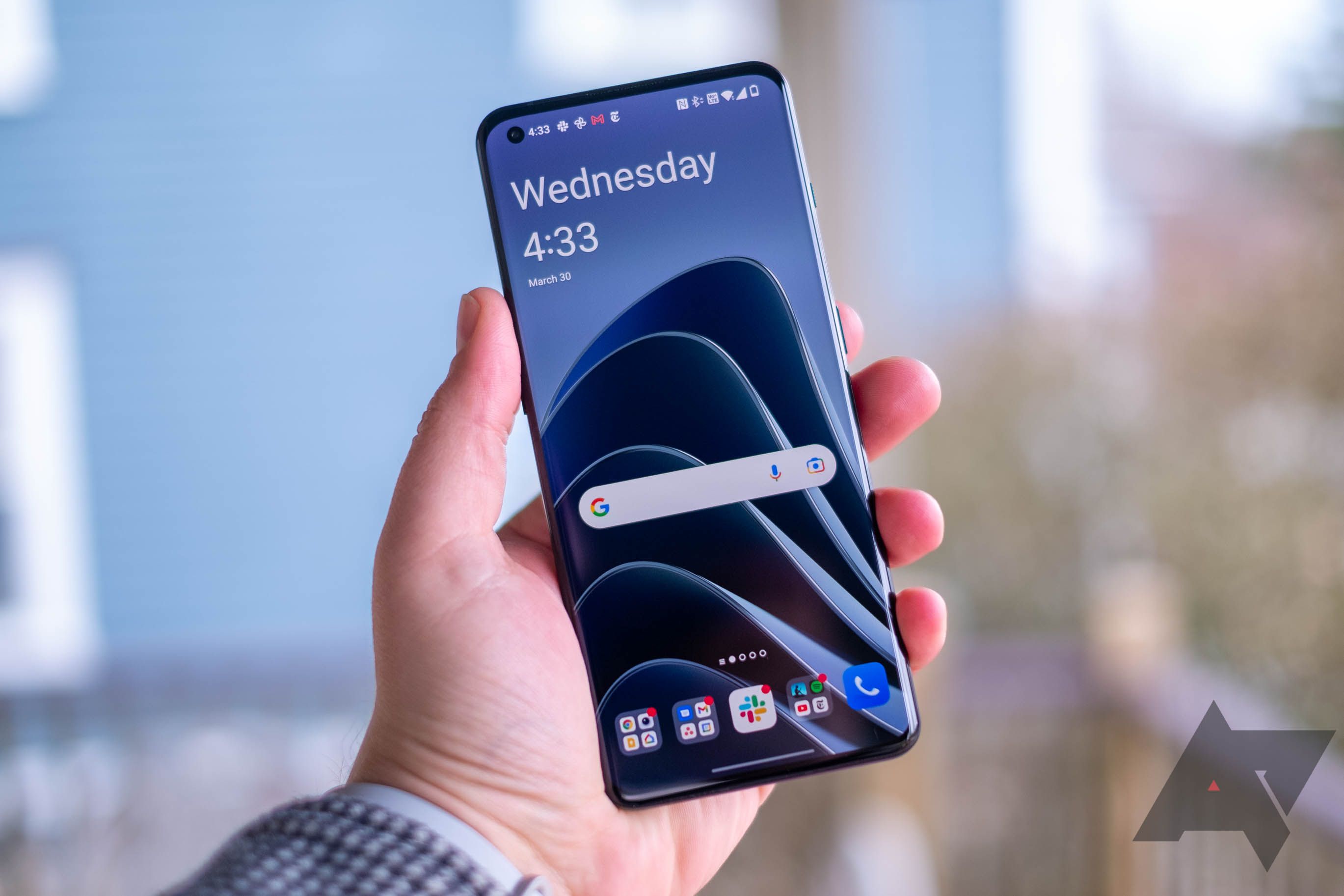The lineage of OnePlus as a company is unique, starting off as one of the biggest disruptions the Android market ever saw before settling in under Oppo as a defender of the smartphone status quo, falling behind its competitors in software quality and commitment as prices have crept up. Every passing year is a chance to turn that around, but the OnePlus 10 Pro is proof that all but the biggest fans may have to wait a little longer, hoping things will change.
While the phone has some good individual features, like fast charging, high-bit RAW/LOG camera support, and stellar hardware, it makes too many other compromises to recommend, given the competition.
OnePlus 10 Pro
The OnePlus 10 Pro is a mix of upgrades and downgrades, leaning away from its "Pro" name in too many ways to recommend — especially for $900. This latest model skips out on both mmWave and an IP rating, simultaneously downgrading storage and RAM. While battery life is better, OnePlus is falling behind when it comes to software and its update commitment, and OxygenOS is polarizing at best. The camera has some great features, but its inconsistency seals what is a poor deal compared to Samsung's and Google's phones in 2022.
- SoC: Snapdragon 8 Gen 1
- Display: 6.7" 3216×1440, 120Hz (LTPO)
- RAM: 8GB
- Storage: 128GB
- Battery: 5,000mAh
- Ports: USB-C
- Operating System: Android 14 with OxygenOS 14
- Front camera: 32MP
- Rear camera: 48MP, f/1.8 main; 50MP, f/2.2 ultrawide; 8MP, f/2.4 telephoto
- Connectivity: NFC
- Dimensions: 163 × 73.9 × 8.6mm
- Colors: Volcanic Black and Emerald Forest
- Weight: 201g
- Charge speed: 65W wired (80W international), 50W wireless
- IP Rating: No (unlocked); IP68 (T-Mobile)
- Price: $799
- Cellular connectivity: Sub-6GHz 5G (no mmWave)
- Wi-Fi connectivity: Wi-Fi 6E
- Bluetooth: Bluetooth 5.2
- Great screen.
- Good performance
- Good battery life
- LOG format video and 10-12 bit/RAW camera support
- No IP rating on unlocked model.
- Hit-and-miss camera.
- No mmWave.
- Polarizing software.
- Substandard update commitment.
- Aggressive background app management (delayed notifications, kills apps faster than expected)
- Poor history when it comes to updates.
- No 5G on AT&T.
Design
The OnePlus 10 Pro is nestled almost precisely in the big-phone sweet spot and a little more comfortable to use than the taller and wider Galaxy S22 Ultra. If you’ve got bigger mittens in your closet, it can even be a one-handed phone; just keep a good grip. That might be trickier than you expect, given the finish on the phone.
The Volcanic Black colorway we reviewed has a matte frosted Gorilla Glass 5 back that is sometimes too slick. If you use a case (as most people do) it won’t be an issue, but the soft texture is quite pleasant. It almost feels like skin, with a very fine-grain glittery effect. I think it might be the nicest matte glass I’ve ever seen or felt on a smartphone, making it even more of a pity that it will end up hidden behind the cheaper material of a case.
One thing a case can’t hide is the Hasselblad-branded camera hump. Again, OnePlus opted for more premium materials here — an undefined ceramic fills the space between the stovetop burner-looking camera arrangement. OnePlus knows more about premium materials than the average smartphone company, and says it takes four days to form and heat the ceramic part, plus another 60 hours of polishing. Ceramic is less likely to scratch or crack than glass, and with such a large and prominent camera plateau, it might add a little protection from the errant key in a purse or a tumble.
The hump flows over the edge with a seam separating it from the phone’s mid-frame — right below the hump appears to be a weak spot, according to JerryRigEverything’s Zack Nelson. Ceramic or not, you might not want to sit down with the 10 Pro in your back pocket, though I didn’t have any issues with the phone bending (or outright snapping in half) in my time with it.
Left: Off-angle distortion just barely visible along the edge. Right: Hole punch camera, as per yooj.
The curves continue around to the front and the display. Like all OnePlus “Pro” flagships, it has a slightly curved screen. It’s a tweak that makes big phones just a little easier to use (especially one-handed), and I prefer it, but many people don’t. If you look very closely, you can see just a tiny bit of off-angle color distortion on the very edges, but I don’t find that any more distracting than the reflections all glass-topped screens have to live with.
Although the OnePlus 8 Pro and 9 Pro were both explicitly IP rated, OnePlus is falling back on its old strategy of ditching an official rating with the unlocked 10 Pro. The company claims it's still water-resistant, but there's no standard benchmark for that claim. However, T-Mobile will sell an IP-68 rated version.
Hardware
To my eye, the display seems almost identical to last year’s 9 Pro, right down to the dimensions and specifications. But OnePlus claims it’s a second-generation LTPO panel that can dynamically adjust its refresh rate up and down from 120Hz to 1Hz a little bit faster, potentially offering a slightly smoother experience. Ignoring the acronyms and numbers, all this means is it’s a smooth screen that consumes as little power as possible.
Probably more noticeably, OnePlus calibrated the display at two different brightness levels. Almost all phones tend to fall out of whack when it comes to color accuracy and gamma (i.e., contrast) at both their maximum and minimum brightness levels. OnePlus says that calibrating for multiple levels improves the accuracy across a wider range of brightnesses. I don’t have the hardware to test that claim in detail, but I noticed that the phone had exceptional black levels down to its minimum brightness setting, preserving shadows incredibly well, and color saturation and contrast only started to feel incorrect at a very high brightness level.
Like most LTPO panels, it’s also incredibly uniform. If you’re a nighttime YouTube-in-bed binger and watch a lot of content at very low brightness, this is the screen for you. Outdoors it got more than bright enough, even in direct sunlight (outside a dumb camera limitation I’ll touch on later).
The only two other issues with the screen that I ran into were a distracting flicker when the ambient display was enabled, and the default display resolution is locked to HD, though you can set it to a higher resolution or an adaptive mode yourself.
As with any non-Apple flagship phone, you’ve got an in-display fingerprint sensor — a potentially less secure optical sensor, in this case. After dropping the ball with the 9 Pro, OnePlus moved the fingerprint sensor back up to a higher position on the 10 Pro’s screen, making it more ergonomic to use. Last year, I was often scared I might drop the 9 Pro while unlocking it; it was in such an awkward spot.
Although OnePlus is taking the feature off some of its budget phones, the alert slider is still here on the 10 Pro. It’s a great feature, with a three-position slider switching between ringing, silent, and vibrating alert modes, and I wish more phones had it. On that note, haptics on the 10 Pro have also been improved. While vibrations still aren’t as strong as on an iPhone and Android itself doesn’t use haptics as well as it could, the sensation here is pleasantly sharp (if lacking variety).
The earpiece and bottom-firing speaker can provide stereo sound if your earbuds die, and they get loud enough at maximum volume to hear an alert a few rooms away. Though there’s almost no bass, you could use it as an impromptu speaker while doing a little yard work, but even the cheapest Bluetooth speakers should beat it.
OnePlus still includes a charger in the box, unlike many other companies these days, but it’s also necessary. OnePlus offers faster proprietary charging — once called Warp, now under Oppo named SuperVOOC — that needs a special charger to work. Although it’s a bummer the 80W charger the 10 Pro enjoys in other markets isn’t coming to the US, the included 65W charger is still the fastest you can get here by a large margin. Also included in the box are a set of stickers, the usual warranty/info cards, a bright red Type-C to Type-C cable, and a Type-C to Type-A adapter for transferring data to your new phone.
Software
I’m not here to mince words: I don’t like OnePlus’s current version of Android, and OxygenOS 12.1 offends my sensibilities in a thousand tiny ways. Arguably, OnePlus’s software hasn’t been “stock” in a long time (even if it once looked close to that in UI terms), but that word shouldn’t appear within a mile of OnePlus’s marketing materials now.
Fundamentally, this is still Android — it runs Android apps, you get them from the Play Store, notifications and settings work (mostly) as you expect, though OnePlus has changed the appearance of a few things, and some features you expect are missing. There are a few cool changes, like three different dark theme types depending on whether you prefer inky blacks or gray backgrounds. Other changes feel vestigial and almost bolted on, like the current Shelf, which integrates with the Notes app you’ll immediately replace with Google Keep, a step counter, weather, and a Spotify widget, among other features. It’s part of the launcher but accessible with a swipe down on the right side of the status bar from anywhere, and I frequently trigger it when I don’t intend to.
In the interest of brevity, I’ve put my personal OxygenOS 12.1 complaints on the 10 Pro so far (big and small) here in a list:
- You can’t access the “App info” screen from the multitasking menu on Oxygen OS to see permissions, storage use, or troubleshoot app issues.
- There’s no QR code scanner in the camera app (even though we’re using QR codes for things more than ever these days).
- OnePlus makes even setting arbitrary length PINs more of a pain than it should be, with the same weird 6/4-digit defaults ColorOS uses.
- A US-specific phone should not have a 24-hour clock applied as its default.
- At least once, I wasn't able to dismiss a large notification stack, even though every individual notification in it could be.
- Removing a whole folder full of apps on the stock/default launcher is one step, but removing a single app is two for some reason, with tedious and superfluous animations.
- Text for the Red Cable Club registration process during setup has some bad translations (and the process itself can bug out pretty easily).
- By default, Gmail was pinned in the multitasking menu. (I think to circumvent OnePlus's terrible background app management, which can delay notifications.)
- My device loaded incorrect APNs for T-Mobile during the initial setup, disconnecting from mobile data randomly when I left Wi-Fi, requiring a factory reset to fix (though OnePlus claims no other reviewer had this issue).
- The Google Assistant power button shortcut didn't work until I had reset my "Default digital assistant app" (which was already set to the Google Assistant).
This is all excluding my general complaints when it comes to OxygenOS 12, which is littered with tiny, poorly thought out changes, and the cumulative effect is to just make OxygenOS itself feel poorly thought out. I can get by using it, but it’s just not as pleasant for me to use as Samsung’s OneUI or the software on Google’s Pixels.
With a years-long legacy of being one of Android’s most-loved skins, the current state of OnePlus’s software is a minor tragedy. Many of the problems I listed are simple issues that I think reveal how little OnePlus cared to localize its software, how little attention it pays to the distinctions and preferences of the US market, and how little UX matters to the company.
Software is as much about updates, and both Samsung and Google offer monthly security updates, while OnePlus can’t even keep up with its lackluster every-two-month commitment. Just before our review, I had switched back to the 9 Pro, and I noticed that it was still running an update that landed in December. It almost hit four months on the same patch level as security vulnerabilities continued to build and Android 12L/12.1 had rolled out. That is entirely unacceptable in a nearly thousand-dollar phone, and I have absolutely no faith the 10 Pro will be treated any differently.
OnePlus also only offers three major Android OS updates and four years of security updates. Samsung’s much cheaper Galaxy S21 FE (which is just $550 right now) promises four years of updates and five years of patches — a policy which applies to all its recent flagships for the last two years. And when OnePlus does update its phones, things spectacularly break. This used to just be an issue with the company ignoring problems with older phones, but even the 9 Pro had major issues with the Oxygen OS 12 update when it was its latest flagship.
I’ve been saying this for a while now, but OnePlus needs to deeply reexamine its software situation.
Performance
However you feel about software and updates, general performance is otherwise good, thanks to the Snapdragon 8 Gen 1 inside it. I did notice some random stuttering once in a while, sometimes while rotating phones or swiping between apps, but I expect little issues like that to be ironed out in the first few updates.
In limited testing with Geekbench, OnePlus doesn’t seem to be doing anything particularly nefarious when it comes to performance profiling, throttling, or benchmark manipulation, though the numbers themselves are around 15-20% lower than expected for an 8 Gen 1 device, which usually hit ~1200 in single-core and ~3700 in multi-core. It looks like OnePlus has applied an across-the-board throttle of some kind to the 10 Pro.
- Geekbench Corporate: 976/3248
- Play Store Geekbench: 967/3268
- Netflix Spoof: 967/3274
- Chrome Spoof: 975/3320
- Genshin Impact Spoof: 969/3202
I should stress, benchmarks are just a number and don’t fully encapsulate device performance. So far as I can tell, OnePlus seems to have better sustained performance, which is arguably more important when phones are as superfluously fast as this. OnePlus claims its game-optimization tuning is quite sophisticated, using machine learning to allocate resources in a way that prevents unexpected performance spikes and dips. I can’t verify all that, but games seemed fluid to me, and I’ll take that over numbers I can brag about in a forum or comment section. Being carried by what appeared to be a pair of screaming toddlers in Fortnite, gameplay was smoother than I've experienced on some other phones, even when set to 60FPS with high resolution textures.
Personally, I don't care if OnePlus is applying a mild throttle to the 10 Pro, the phone is more than fast enough, and it likely benefits battery life and sustained performance. But if you do care about them (for some reason) this could be an issue — these numbers are closer to what some Snapdragon 888-based devices see. Thankfully, OnePlus says you can also disable the throttle entirely by flipping on the "high performance mode" in Settings -> Battery, but it will chew through your battery faster. Really, this is the best way to implement something like this, and kudos to OnePlus.
OnePlus did make some strange decisions when it comes to other hardware, though, eliminating mmWave support and cutting down RAM to just 8GB compared to last year’s US model. Admittedly, mmWave isn’t super useful, but it’s the sort of extra you expect to see at this price point, and the same goes for RAM. Although OnePlus tells us it has a souped-up version with 12GB of memory coming eventually, it failed to live up to a similar promise last year, so I’ll believe that if and when it happens. While I’d normally assume 8GB of RAM would be enough (and it is for Samsung) it might not be here.
Mix in OnePlus’s overly-aggressive background app management issues, and I’ve seen apps opened in the last minute get pushed out of memory if they fall further back than 3-4 items in the multitasking carousel. Spending a wonderful and warm day in the park, reading in the Kindle app and the New York Times while half-heartedly multitasking with an eye on work apps (plus a little Twitter mixed in), I noticed apps regularly reloading when swiping between them. I’d expect that in a mid-range phone that costs half as much, but not here. I can’t be sure if this is a software issue or a hardware limitation, but it was a little frustrating, and not all apps resume from memory gracefully.
These numbers indicate background apps are in for a rough time.
Delayed notifications can still be an issue because of OnePlus how much OnePlus butchers expected background app behaviors, too, but actual years of customer complaints and efforts from developers like Don't kill my app! haven’t changed OnePlus’s mind when it comes to the practice, so I don’t think the company cares.
There are still some annoying OnePlus-specific hardware issues, like combination power/audio dongles (which I like to use in my car) just straight-up don’t work, with the phone either accepting power or sending audio, but refusing to do both simultaneously. I can remember multiple OnePlus phones which have launched with this issue, and sometimes it gets fixed, but the company can never seem to learn from it.
I didn't have any show-stopping issues with Bluetooth signal strength/stuttering using the 10 Pro with earbuds, and can confirm that the phone supports Wi-Fi 6E.
5G connectivity worked for me on T-Mobile (after I reset my phone, at first it loaded APNs that prevented a reliable connection), but 5G won't play nice with AT&T, though it supports one of the necessary bands. And, even though this phone costs $900, there's no mmWave support for ultra-fast 5G if you live somewhere that has it.
Battery
Battery life was very good. OnePlus squeezed in an even bigger battery this year, and in one instance I was able to get 6 hours of screen-on time over two days — and that included a little TikTok binging, which can be surprisingly hard on a phone. I find that my battery life numbers often indicate an upper-range of what customers can expect. There are phones out there (like the Google Pixel 5a) which can smash right past that and last nearly a week if you baby them, but for a Pro/Ultra-level flagship and for most people, the OnePlus 10 Pro is an all-day phone, and then some.
The only relative battery bummer is the fact that the 10 Pro will have to make do with “just” a 65W charging rate in the US. While getting the 85W charging OnePlus supports in other markets would have been cool, the company claims our 110/115V system prohibits that. There are also plenty of USB PD-compatible chargers out there that manage to beat 65W on US voltages, so I’m not sure that claim is quite correct (or there’s more to it, and OnePlus is just oversimplifying in its explanation).
More confusingly, OnePlus tells me that if you use the US phone in a market with 85W charging and use an 85W charger, it still won’t charge faster than 65W — OnePlus apparently limited things on the phone’s end for the US, too.
Ultimately, 65W is still quite fast, and you won’t find a phone in the US that charges faster. The same goes for the 50W wireless charging, which runs cooler than expected and blows the competition away, though the fan it needs to stay cool is noticeably loud.
You may just want to buy the 10 Pro for its charging speeds alone, if you’re the right sort of person. While I don’t travel as much in the age of COVID, I know from personal experience that OnePlus’s fast charging speeds can save you in an emergency. For most, super-fast charging is just a handy perk, but once in a while it can be a life-saver.
Cameras
The camera on the 10 Pro is as flexible as you’d expect for the price, with a wide-angle primary, an ultra-wide, and a telephoto. However, the ability to shoot macro photos with the ultra-wide camera is gone, though the ultra-wide itself hits a wider 150-degree field of view now.
"Zooming" in and out between all three cameras.
The telephoto is sharp but can sometimes take washed-out photos and lacks a little in “zoom” quality and detail compared to other phones. The wide-angle has a few different modes depending on whether you want distortion or not, and it gets crazy wide.
Hasselblad branding or not, OnePlus’s cameras can take some really great photos, but the results are still unpredictable and sometimes unrealistic — a stylistic interpretation of reality rather than results more firmly grounded in it. Occasionally, photos are downright garish, too dark, or washed out, messing with shadows in a scene distractingly (sometimes crushing them terribly, more often overexposing and brightening them way too much).
Every camera can get confused, but testing side-by-side with a Pixel, I prefer Google's more lifelike contrast and how it handles shadows.
I’m often impressed by OnePlus’s low-light performance, since its cameras don't have that sort of reputation, but I wish its night mode was automatic and a bit better at processing areas with troublesome contrast — sometimes you get strange HDR-like effects on light sources. And, while lens flare is sometimes a concern, it's miles better than it is on the Google Pixel 6 or 6 Pro.
While it lacks the fun astrophotography mode that Pixels have, You can even snap some shots of the night sky in better-than-expected fidelity, and it occasionally beats the Pixel when it comes to low-light shadow detail. But, for all that the company champions its Hasselblad-tuned colors, they can particularly miss the mark in low-light. And, while every phone needs to crank exposure in dim lighting, I find Pixels nail motion in marginal lighting far better.
The photo captured by the OnePlus 10 Pro's Night Mode might be more striking, but the colors were almost exactly what the Pixel's Night Sight captured.
OnePlus also has RAW+ and 10-bit photo capture modes that make an after-the-fact photo-tweaking process better, but you need to be careful: Some apps and platforms don’t play nice with the 10-bit HEIC format yet. Google Photos, for example, can back these photos up but not view or edit them on the web.
There’s also LOG support for videos if you want the extra quality and dynamic range to grade colors, and a RAW+ format available. While those could be valuable features for the right person, and I can snag a bunch of RAW photos or LOG-formatted video and spend ages editing them to deliver the very bests results possible to compare them to other phones, that’s not something most people are going to do. But if you know you will do it, the new RAW+ feature does a fantastic job, with way better results than other Pro/RAW modes I've used.
RAW+ gives you way more post-processing flexibility, plus the benefits of computational photography (most source RAW images from smartphones don't look this good).
If you prefer things the easy way, OnePlus has three new filter modes in the camera app tuned by Hasselblad ambassadors, though I strongly prefer to apply things like filters after the fact, if I use them.
When it comes to basic camera use, there are three annoying issues. Though I don’t shoot a lot of video in general (I don’t have kids and my pets are boring), OnePlus annoyingly kicks the phone into a power-saving mode that reduces screen brightness after a minute or so if you record at a high-enough framerate and resolution. This makes the screen almost entirely illegible in bright light, which could be a serious problem for folks who regularly record a lot of video outdoors.
Screen brightness drops with this error if you record at a high resolution and framerate for too long.
I also don't like that both filters and shooting modes aren't reset when the camera app restarted, as it wastes time if I have to change modes to get a fast snapshot, and the indicator for an enabled filter is easy to miss. I ruined a whole day of photos because of it, I'm used to camera apps resetting when killed (as Pixels and Samsung phones do).
Lastly, the lack of QR code scanning (mentioned before) is repeatedly frustrating loss with the rise in QR code menus and payments during the pandemic. Having to tediously launch a separate app like Google Lens rather than just power-button-shortcut my way into the camera to read one is pretty annoying.
The front-facing camera does a good job even in challenging lighting, though it can wash out if light is at just the right angle.
Ultimately, I still like OnePlus’s camera… sometimes. Once in a while, I’ll get a shot from it that leaves me saying “wow,” but I can’t predict when that will happen, and that’s frustrating. Most of the time, the results are just fine, and sometimes I find the results deviate too much from the actual colors or contrast of a scene and my own expectations. If I’m in a situation where photos are really important to me, I’m more likely to prefer a Pixel or Galaxy S phone in my pocket.
Should you buy it?
Only if you’re a die-hard OnePlus fan, need the advanced camera features, or plan to ROM it. For $900 I expect a little more from a smartphone than OnePlus delivers. Even excluding my software complaints, which fans of OxygenOS and ColorOS can easily dismiss, it has other issues. The loss of mmWave isn’t that big of a deal, but there's no official IP rating on the unlocked model either. At the $900 “Pro” level you have to deliver perks like that, and while Samsung is able to make 8GB of RAM work on phones like the Galaxy S22+, the 10 Pro kills apps faster than I like or expect. It also can't do 5G on AT&T, which rules the phone out entirely for something like 45% of the US market. While some of the specialized camera tools could be handy, and I like things about its photos sometimes, It’s still a little behind the curve in a more fundamental point-and-shoot way, with often unpredictable results.
Software tastes are highly subjective, but I do not enjoy OxygenOS in its current form. If you do, it might be reason enough to buy the OnePlus 10 Pro, but I think it’s less accessible for customers and makes needless and vexing changes compared to competing software solutions. I prefer every other Android skin in the US over it.
The Google Pixel 6 Pro and Samsung Galaxy S22+ are both better phones, although the former has its own ongoing and frustrating software update snafu and the latter costs a little more, though it’s frequently discounted. If you can live without a dedicated telephoto camera and don’t need the extra display resolution (which OnePlus doesn’t even enable by default) or screen size, even the base Pixel 6 or S22 are better phones for less money.
As a former OnePlus fan this is disappointing to say, but I think whatever it is you value, there’s a phone out there that does a better job than the 10 Pro, unless you plan to root or ROM your phone. It’s not as popular as it used to be, but OnePlus is still one of the few brands that prioritize that, both making it easy for customers to do, and helping developers bring ROMs to its phones.
The era of Carl Pei getting on stage and apologizing for the company’s missteps and blunders seems to be over, and maybe his new company Nothing will pick up the mantle OnePlus has since shrugged off. But today, right now, the OnePlus 10 Pro is just a so-so phone, with a substandard update commitment, loaded with tons of tiny frustrations, building on a history of perpetual software problems, equipped with a good but unpredictable camera, and missing perks like mmWave and extra RAM, all for just a bit too much money. At $700-800 MSRP, it would be easier to recommend, but not here.
Buy it if…
- You want to ROM and root your phone.
- Fast charging is a priority.
- Video in LOG format and RAW photos would be very useful for you.
Don’t buy it if…
- You care about updates, security, or long-term software quality.
- Features like an IP rating or mmWave are a must.
- You want a better low-fuss point-and-shoot camera in a phone — buy a Pixel.
- You’re coming from a Samsung or Pixel phone, OxygenOS will feel like a step-down.

.JPG)
.JPG)
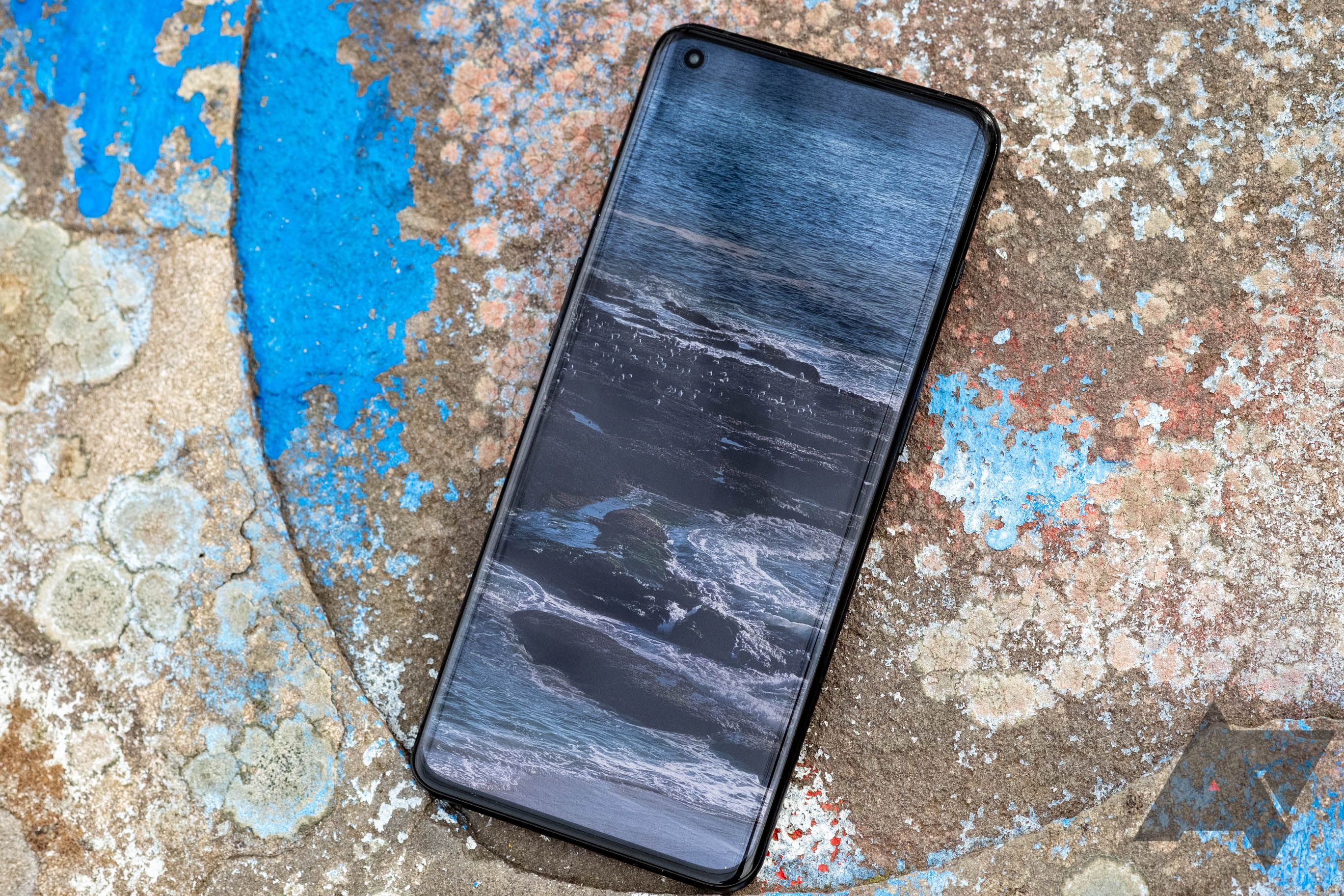
.JPG)
.JPG)
.JPG)
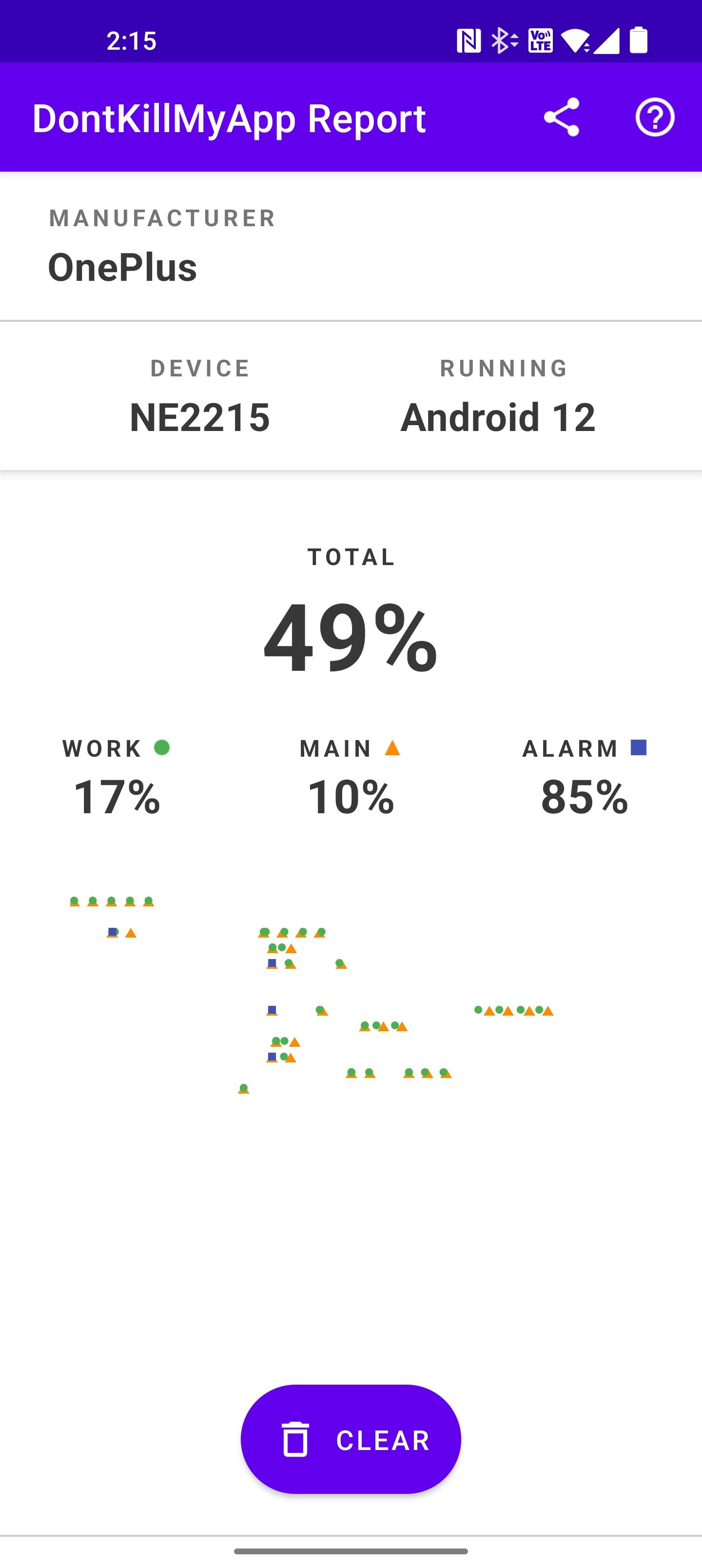
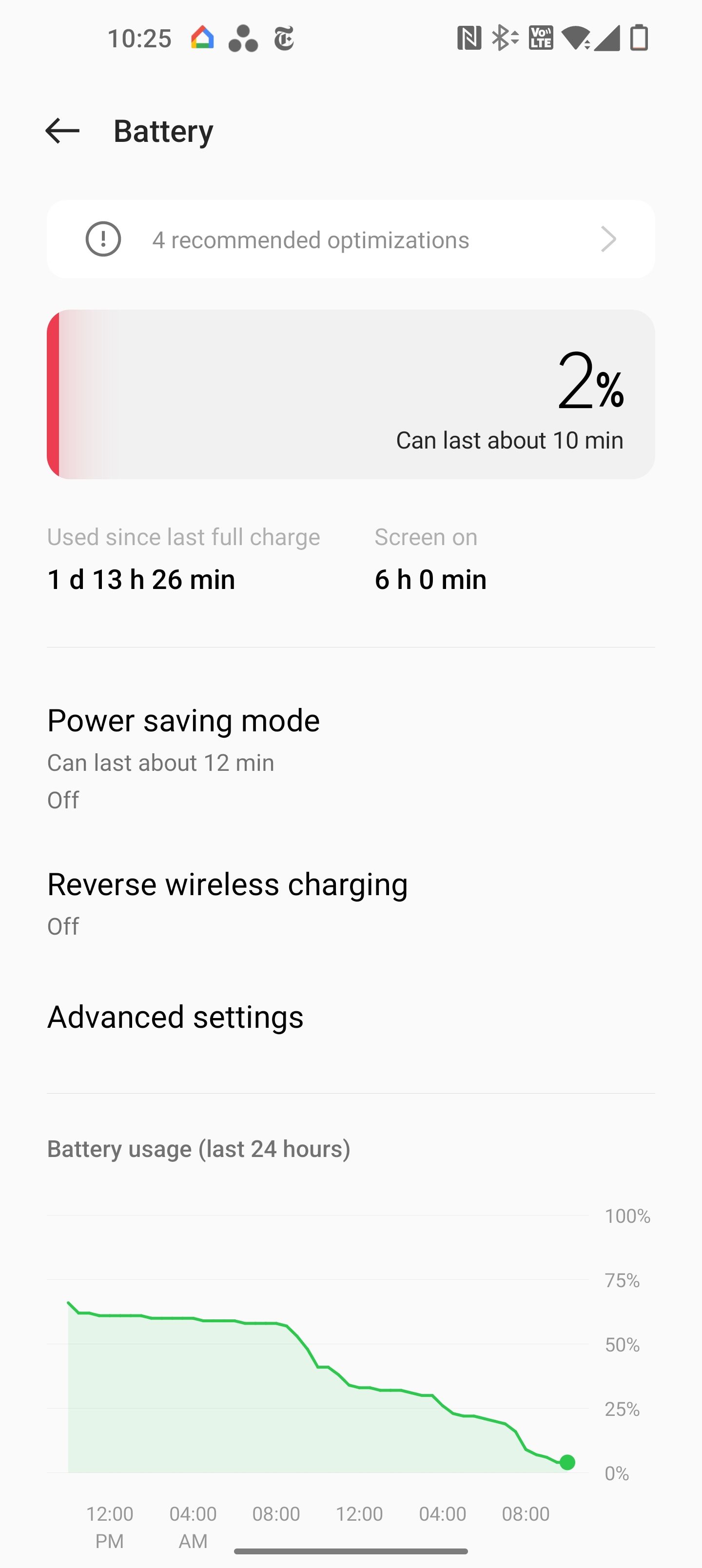
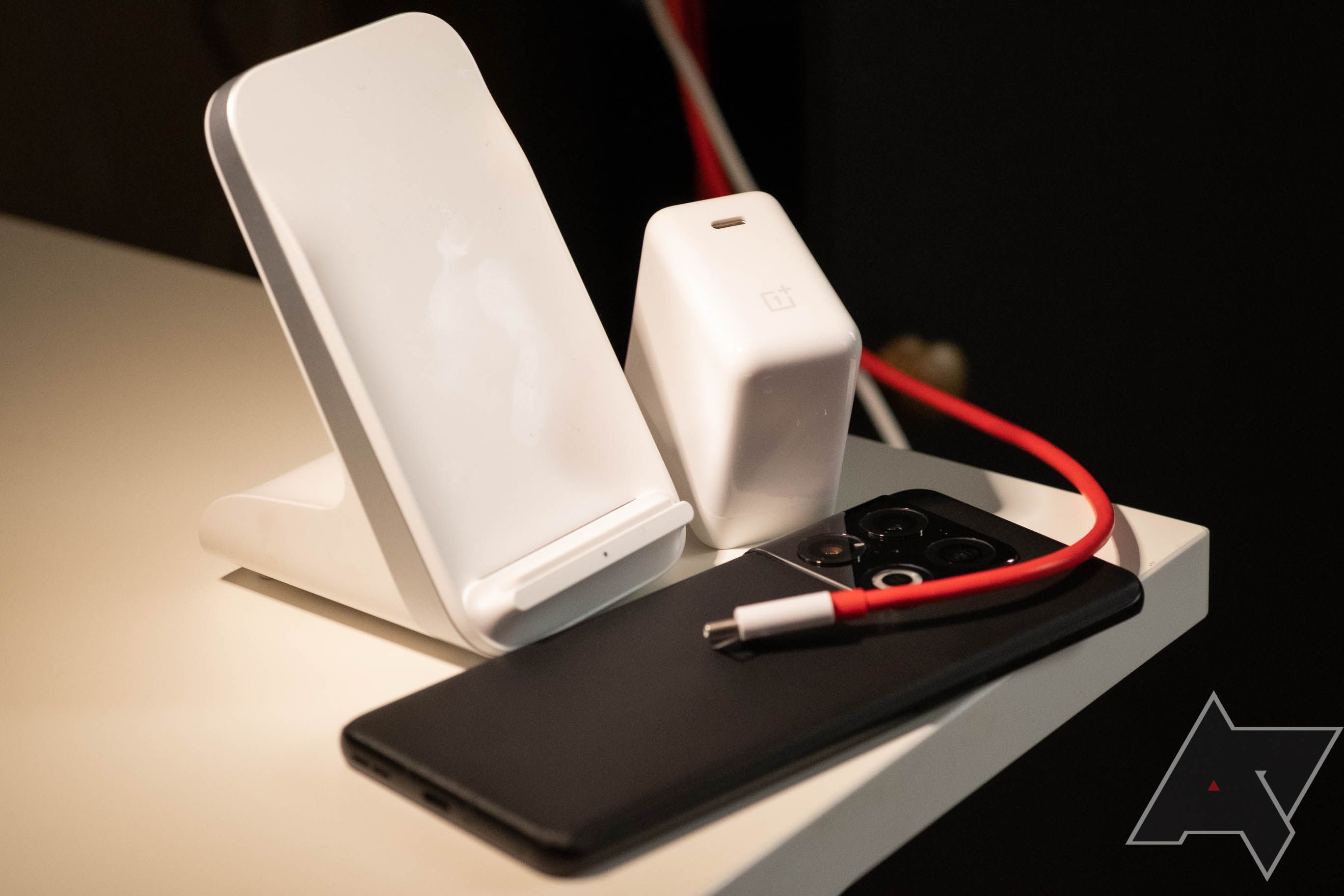
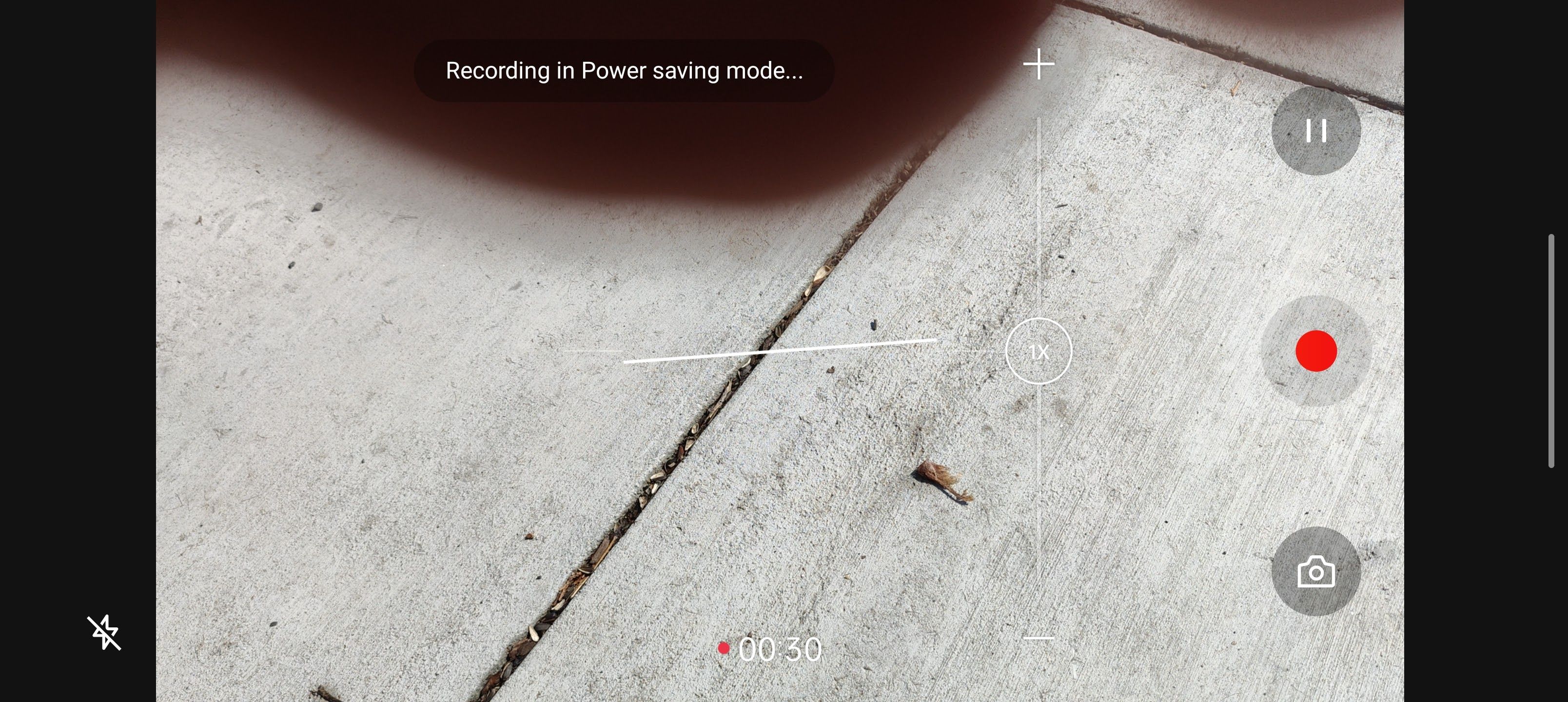
-1.JPG)
